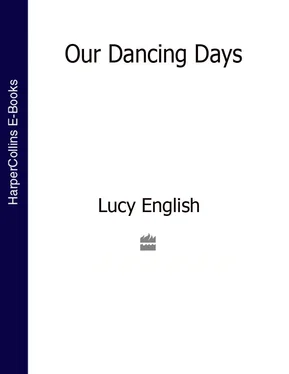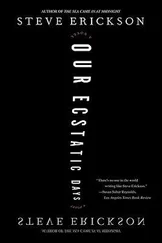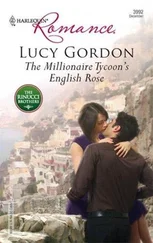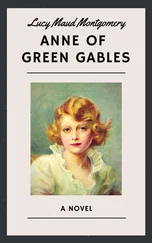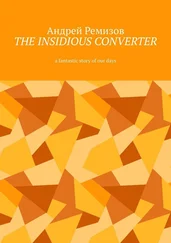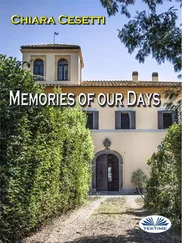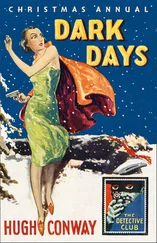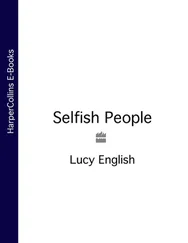It wasn’t like that, thought Tessa … And here were she and Don again, in white because that was their wedding. Shit. And she and Dee-Dee swimming in the moat. Tessa felt herself slipping again down the embankment. There were older photographs too; Swinging London, she and Dee-Dee in mini skirts, and now one in black and white, two little girls in a suburban garden, Theresa and Deirdre, puffed sleeves, buckle shoes, arms round each other, smiling …
It was late August, the Saturday before the bank holiday. The weather throughout the summer had been indifferent, some might even have called it rotten, but Tessa did not care for sunshine for with it came droves of people, in summer clothes, soaking up the day like pink sponges, with noisy children, grandmothers, dogs and radios. And at the moment Tessa did not care for people.
She had now been in Suffolk for ten days. The rain had slowed her work, for although she preferred damp landscapes, it was more difficult to sketch satisfactorily under dripping trees. At Heveningham she tried for two hours to draw the ribbon wall, but spent most of the time in the orangery avoiding a thunderstorm.
She was in her hotel room in Bury St Edmunds surveying her work. She was quite pleased. They were rough sketches on rain-blotched paper, but she could see how they could progress. Remember, light on stone mullions, indigo shadows under cedar trees. She scribbled notes on the paper. Remember, wet skies, big clouds. The light, pale gold, could be pale green. Sienna-ripe wheat, barley’s softer … Tessa had travelled right through Suffolk, from the rolling willow-banked fields of the Essex borders and the Stour valley to the bleaker wheatlands of what is called High Suffolk, which is almost a joke since nothing except church towers are really high in Suffolk, to outside Bury St Edmunds, the hedgeless fields, agribusiness wheat deserts, no weeds, no poppies, no cornflowers. But it’s not got worse, thought Tessa, remembering exactly what it was like to be in the middle of a wheatfield, when the far end of it was ages away, and the trees by the ditches seemed tiny. And Tessa paused with this image of herself, ‘walking away from the Hall’, and as she saw herself becoming tiny in the distance, she felt uneasy and uncertain, for she had yet to go to St John’s.
I’m slipping, she thought, and she was tired, for she had worked hard, concentrating on forms and colours and angles and light and the present, always the present, the now of the image in front of her, nothing at all to do with memories. And Tessa felt sad and vulnerable. Ring up P. and C., said one part of her; oh weak, weak, where’s your steel? Where’s your ice? said another. And she thought of her stark canvases, but they were miles away on the other side of England.
She wrote a postcard to Murray. ‘Hope you enjoy the Festival. Couldn’t make it this year. I’m on an assignment in Suffolk. Love to Claudia and the kid.’ She had never told Murray much about Suffolk and what she did say was rather vague. Oh, I lived there in the seventies with some hippies. Her life before him held little interest for him. He was a man of the present. She licked the stamp. She had a picture of him in her mind at the opening of one of her exhibitions. Murray, in the centre of the room with a group of people around him. He was a tall man. He turned round suddenly to look for her and in that sweeping movement seemed to Tessa like a magician who could conjure up who he wanted, and make disappear who he didn’t want. She decided she wouldn’t write to him again.
She left her room and went to the abbey gardens; the hotel faced one of the old gatehouses. Bury St Edmunds was lively that Saturday; the market was on, the car parks were full, in the abbey gardens were people enjoying themselves in the manner Tessa found so repugnant. But now she was preoccupied.
The abbey, the burial place of St Edmund, had once been huge, the largest ecclesiastical building in Britain. Its size today would compare to a shopping complex, but there was virtually nothing left of it, eroded since the Reformation by weather, and also by townsfolk who used the place as a quarry; there were many houses in Bury built out of the abbey. Only a few portions of wall and excavated foundations remained. The lumps of stone, to Tessa, were baffling, a piece here, another bit at the far end of the gardens. A sign said ‘The Dormitory’ – did monks really sleep there? She couldn’t imagine it – where? There wasn’t anywhere. She stood in the nave by the high altar. Over her head should have been a vaulted roof but instead there was the Suffolk sky with hanging clouds moving slowly. It would have all vanished, thought Tessa, if someone hadn’t preserved it. It was time for her to start working.
From Bury St Edmunds she drove east and north, for St John’s was close to the Norfolk border. She had hitched up and down this road dozens of times but now the road was wider and faster, bypassing all the villages – the windmill at Stanton; Botesdale and Rickinghall Superior, so close to each other they were quite entangled; Walsham-le-Willows. She was watching the road signs. Harlesdon, with its wide, open street and Georgian houses. Ten miles to go. The road ran alongside the Waveney. Here she felt she must know every tree. Wortwell. It’s a job, I’m on a job. Piccadilly Corner. Wasn’t that where? … Six places, three sketches of each … Flixton, the old aerodrome, it’s been ploughed up. Well, the pub’s been tarted … Earsham … I waited for a lift there for three hours once. Then just before Bungay she turned off the main road with the lorries and holiday cars going to Lowestoft, into the lanes, into the area called the Saints, where there’s a local saying that once you get into them you can’t get out, and it seems true, for the roads meander irrationally and the signposts, if you can find them, are confusing. Left, St Margaret’s, right St Margaret’s. But Tessa was not lost. Here the countryside was open and the sky fell right down to the ground uninterrupted. The road swept round in a huge arc avoiding no apparent obstacle. This was the Saints. Left was St Margaret’s, St Michael’s, St James, St George, St Lawrence, the other St Margaret’s; and right was St John’s.
*
St John’s was barely a hamlet, four cottages and a farm close to the church. Once over the bridge there was no more of it, a truly uneventful place. But across the fields was a group of tall trees which the eye was drawn to as the trees in this area were usually solitary; and as the road turned again the Hall could be seen. Tessa saw it now and felt again the impact, for although the Hall was neither huge nor grand it was imposing.

Three of them in a car, cruising round Fulham on a hot day.
‘What shall we dooo?’
‘Come on, Don, you’re full of ideas.’
‘… We could go somewhere.’
‘Yeah, what a turn on.’
And then Don said, ‘I’ve got a super idea’ and Tessa and Dee-Dee fell about laughing. ‘No, honestly, a really good idea … I’ve got a sort of cousin …’
‘Wow.’
‘He lives in the countryside, in an amazing place … stop laughing … right, you don’t believe me, I’ll take you there.’
‘Don, Don, we believe you … mind that lorry! … Don, Don? Where are we going?’
‘Suffolk.’
Three of them in a car all the way to Suffolk, and Tessa and Dee-Dee sang ‘Magical Mystery Tour’ and kept saying ‘are we nearly there yet?’ but as they got further and further from London the joke wore off. They drove for hours beyond Baldock, Royston and Newmarket, for this was when Suffolk was the sleepiest place on earth and nobody ever went there.
Читать дальше
